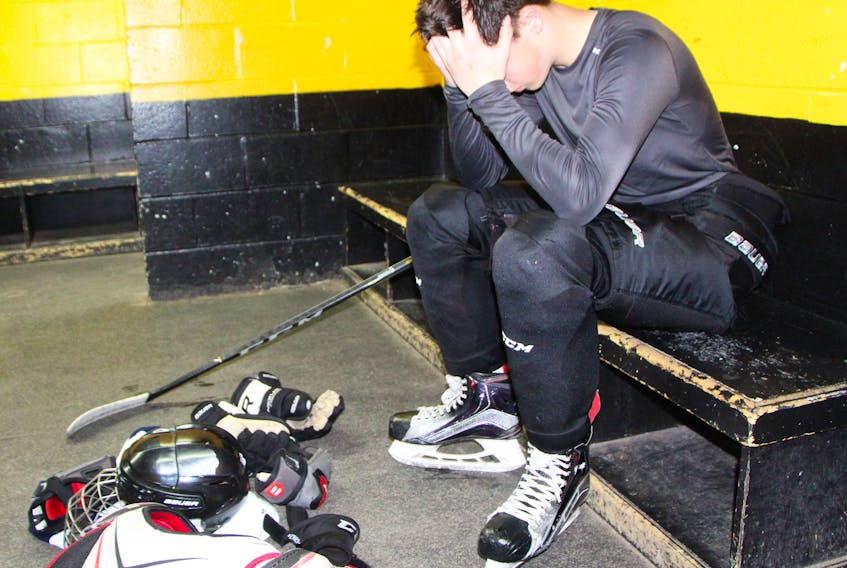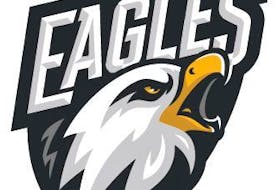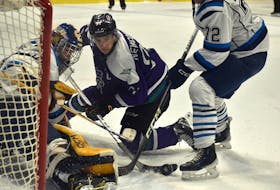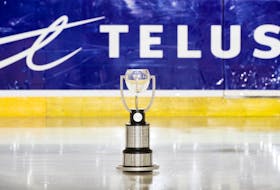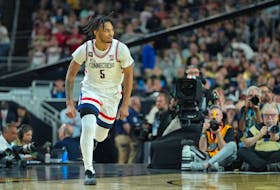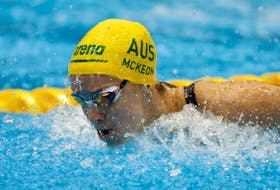GRAND FALLS-WINDSOR, N.L.
After years of worrying about what could happen on the ice, Mark Gill, parent and president of the Grand Falls-Windsor Minor Hockey Association, has another major concern to contend with.
It’s called “buckets and gloves”, where hockey players don helmets and gloves and physically fight each other, similar to a boxing match.
As a result of this activity, Gill was informed in early December by a local physician that three minor hockey players had sustained concussions as a result of the dressing room activity.
Because of privacy concerns, Gill said he was never informed of the ages of the players involved, or if the incidents involved children from Grand Falls-Windsor alone. The activity doesn’t appear to be isolated to this year either, as prior to speaking with the physician, Gill said the minor hockey association had previously taken measures to address past concerns of dressing room horseplay.
“I did hear some anecdotal information that it may have been happening last year as well,” he said. “Again, anecdotally, it’s in the age range of 13-14-year-olds, but also younger than that and potentially older.”
As a result, the Grand Falls-Windsor based association has come out with a zero-tolerance policy on buckets and gloves, with a minimum one-week suspension for anyone found engaging in any form of the activity.
“I’ve had feedback that the penalty may be too lenient, and maybe we should be going stronger."
-Mark Gill, parent and president of the Grand Falls-Windsor Minor Hockey Association
The suspension will also include being scratched from a minimum of two house-league games and one all-star team game.
If greater action is deemed necessary, the suspension could be greater than a week.
Gill said the decision was supported by Hockey Newfoundland and Labrador (HNL) and members of the executive.
“I’ve had feedback that the penalty may be too lenient, and maybe we should be going stronger,” he said, adding that the majority of the executive felt a minimum one-week suspension should be enough to deter kids from engaging in this type of behaviour.
The organization is also encouraging parents to educate themselves and speak with children about the impacts and consequences of concussions.
Gill’s biggest concern is safety.
“To hear there is a potential, and a reality now, in light of the conversation with the local physician, that there is off-ice activity resulting in concussion or potential other injury, is completely unacceptable,” he said.
HNL support
It’s a move that has the support of HNL.
Craig Tulk, HNL’s executive director, said there has been concern with boxing style activities in the dressing room before.
“Approximately 10 years ago, it was big nationally, and there was a campaign to eliminate locker room boxing,” he said. “It was certainly a surprise to hear it has started up in Grand Falls-Windsor.”
“Their biggest reason now is not so much the focus on the punishment, but the education of what kind of damage these types of activities can do.”
-Craig Tulk, executive director Hockey Newfoundland and Labrador
Tulk said the HNL hasn’t received any other reports of locker room boxing in the province, and backs the Grand Falls-Windsor association taking a zero tolerance stance.
“There is no standard punishment for misbehaviour in the dressing room,” he said. “We certainly support all the associations in getting a clear message out.
“Their biggest reason now is not so much the focus on the punishment, but the education of what kind of damage these types of activities can do.”
HNL, he said, has taken a proactive approach towards the safety of its players by removing body checking from minor hockey (except AAA) and last year introduced concussion cards to the players benches in dressing rooms. The cards identify the symptoms of concussions.
“It’s part of the promotion within the sport. “I think it has resulted in a big change in attitude towards concussions,” he said.
Recognizing a concussion
- A concussion is a type of injury where the brain, with great force and speed, hits the inside of the skull.
- The impact, bruising and twisting results in inflammation and damage to neurons, blood vessels and support cells in the brain.
- It can result in abnormal behavior, such as, a change in mood, being nervous or anxious, irritable, feeling "in a fog", and feeling slowed down.
- Physical signs – loss of consciousness, seizures and convulsions, unsteadiness, balance issues, fatigue, numbness or tingling, blurred vision, neck pain, nausea, vomiting, headaches and pain.
- Cognitive signs – confusion, amnesia, difficulty concentrating, selective attention, trouble making decisions, trouble with problem solving.
- Sensitivity – noise, ringing in the ear, taste, smells, irregular sleep patterns, trouble falling asleep, fatigue or sleeping more than usual.
- If a person is suspected to have sustained a concussion, it is recommended to see a physician immediately.
- SOURCE: Newfoundland and Labrador Brain Injury Association
Brain injury
Angie Smith, with the Newfoundland and Labrador Brain Injury Association, had only just heard of buckets and gloves, but she wasn’t surprised to hear it was taking place.
“You hear of all these internet challenges and so on,” she said. “Things like that you can almost expect youth to do, foolish things that they don’t know any better about.”
Smith agreed with sports organizations engaging youth and parents about the dangers of concussions and how it can affect them.
“If they aren’t familiar with the ramifications… to a parent it can look like any adolescent behaviour,” she said. “If the behaviour is after an injury, it should be followed up with a doctor to make sure there’s nothing else going on, loss of consciousness or not.”
- Want in on the debate?
- Write us a letter to the editor and email it to [email protected]. Be sure to include a name, address and daytime telephone number where the author can be contacted. Letters should be no more than 300 words.
RELATED:
NHL, retired players reach $19M concussion settlement
CONCUSSION SERIES: Times change (from Nova Scotia)

